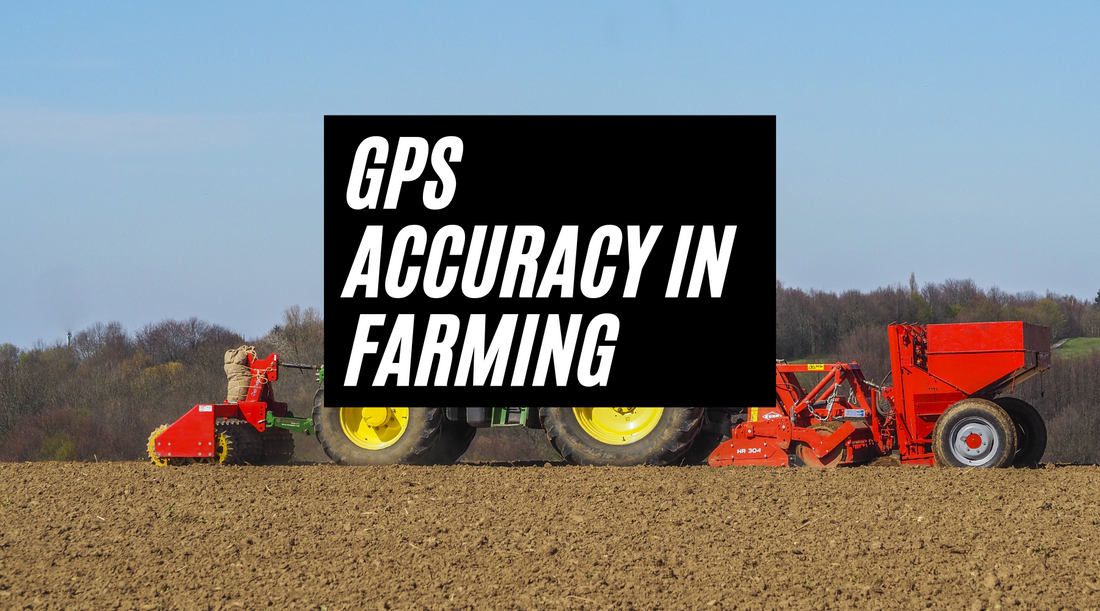Introduction
GPS (Global Positioning System) is a technology that has revolutionized various industries, including agriculture. GPS is a satellite-based navigation system that allows farmers to determine their precise location and navigate accurately across their fields. This technology has become an essential tool for precision agriculture, increasing productivity and efficiency while reducing input costs. In this article, we will explore how GPS works, its applications in farming, benefits, challenges, limitations, and future advancements.
How GPS works
GPS works by using a network of satellites orbiting the earth that transmit signals to GPS receivers on the ground. These signals contain information about the location, time, and other data that can be used to calculate the position of the receiver. GPS receivers use this information to determine their exact location, speed, and direction of movement. The GPS system can provide accuracy within a few meters, depending on the number of satellites in view and the quality of the receiver.
GPS satellites orbit the earth at an altitude of approximately 20,000 kilometers and are evenly distributed in six orbital planes. The satellites continuously transmit signals that are picked up by GPS receivers on the ground. A GPS receiver needs signals from at least four satellites to accurately determine its position, speed, and time.
GPS receivers are made up of several components, including an antenna, receiver, and computer. The antenna receives signals from GPS satellites, and the receiver processes the signals to determine the receiver's location. The computer displays the receiver's position on a map or other digital display.
GPS accuracy can be affected by various factors, including satellite geometry, atmospheric conditions, and signal interference. Some common sources of GPS error in farming include multipath, ionospheric delay, and ephemeris errors.
GPS applications in farming
GPS technology has a wide range of applications in farming, including precision agriculture, farm machinery guidance, and yield mapping and monitoring.
Precision agriculture involves using GPS to gather data about soil conditions, crop growth, and yield potential. This data is then used to optimize crop inputs, such as fertilizer, water, and pesticides, to maximize yields and reduce waste. GPS-guided farm machinery allows farmers to plant, spray, and harvest crops with high accuracy, reducing overlap and avoiding missed areas. Yield mapping and monitoring enable farmers to track their crop yields and make informed decisions about planting and harvesting.
Benefits of GPS in farming
GPS technology has many benefits for farmers, including increased productivity and efficiency, reduced input costs, and better crop yields and quality. By using GPS for precision agriculture, farmers can apply inputs only where they are needed, reducing waste and increasing efficiency. GPS-guided farm machinery also reduces the time and labor required for planting, spraying, and harvesting, allowing farmers to cover more ground in less time. This increased productivity can lead to higher crop yields and better crop quality, resulting in higher profits for farmers.
In addition, GPS technology can also help farmers reduce input costs by minimizing the use of fertilizers, pesticides, and other inputs. By applying these inputs only where they are needed, farmers can reduce waste and save money. GPS technology can also help farmers avoid costly mistakes, such as overlapping or missing areas during planting or spraying.
Challenges and limitations of GPS in farming
Despite its many benefits, GPS technology also has some challenges and limitations in farming. One of the main challenges is signal interference, which can reduce GPS accuracy and affect the performance of GPS-guided farm machinery. Signal interference can be caused by various factors, including tall buildings, trees, and other obstacles that block or reflect GPS signals.
Another limitation of GPS technology is the high initial investment and maintenance costs. GPS-guided farm machinery and other GPS-enabled equipment can
be expensive to purchase and maintain, making it difficult for some farmers to adopt this technology. In addition, GPS technology may not be suitable for all farming operations, particularly in remote areas with limited signal coverage.
Future of GPS in farming
Despite these challenges, the future of GPS in farming looks bright. Advancements in GPS technology are continually improving GPS accuracy and reducing the impact of signal interference. Integration with other technologies, such as sensors, drones, and artificial intelligence, is also expanding the capabilities of GPS in farming. For example, drones equipped with GPS sensors can provide high-resolution imagery of crops, allowing farmers to identify potential problems and optimize crop inputs.
In addition, the potential for autonomous farming using GPS technology is becoming increasingly feasible. Autonomous farm machinery equipped with GPS and other sensors can operate with high accuracy, reducing the need for human intervention and improving efficiency. This could lead to significant cost savings for farmers and increased productivity in the agriculture industry.
Conclusion
GPS technology has become an essential tool for precision agriculture, allowing farmers to increase productivity and efficiency while reducing input costs. GPS-guided farm machinery, yield mapping and monitoring, and precision agriculture are just a few examples of the many applications of GPS technology in farming. Despite some challenges and limitations, the future of GPS in farming looks promising, with advancements in GPS technology and integration with other technologies leading to new opportunities for farmers.
FAQs
-
What is GPS accuracy in farming? GPS accuracy in farming refers to the level of precision with which GPS technology can determine the location, speed, and direction of farm machinery and other equipment.
-
How does GPS help in precision agriculture? GPS helps in precision agriculture by providing accurate data about soil conditions, crop growth, and yield potential. This data is then used to optimize crop inputs, such as fertilizer, water, and pesticides, to maximize yields and reduce waste.
-
What are some common sources of GPS error in farming? Some common sources of GPS error in farming include signal interference, multipath, ionospheric delay, and ephemeris errors.
-
Can GPS work in areas with poor signal coverage? GPS may have limited accuracy and reliability in areas with poor signal coverage, such as remote or heavily forested areas.
-
What are the potential benefits of autonomous farming using GPS technology? Autonomous farming using GPS technology has the potential to reduce labor costs, improve efficiency, and increase productivity in the agriculture industry.

